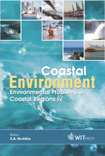Ozone Deposition Modelling In A Portuguese Coastal Zone
Price
Free (open access)
Transaction
Volume
58
Pages
Published
2002
Size
563 kb
Paper DOI
10.2495/CENV020391
Copyright
WIT Press
Author(s)
M J Valinhas, C Borrego, N Barros & A C Carvalho
Abstract
The deposition of pollutants from the atmosphere to ecosystems is the cause of some present environmental problems: acidification, eutrophication and, indirectly, ground level ozone. Related with these issues is the critical loads/levels concept, widely accepted in Europe as basis for pollution control strategies. The knowledge of atmospheric pollutants deposition on ecosystems is needed to set up this methodology. This paper presents the parameterisation done in the deposition module of the system of models MAR IV which is adequate to simulate the transport, dispersion and removal of pollutants, including ozone production for mesoscale application. The ozone surface resistance (Rc) parameterisation was applied to Lisbon region and the model's performance was assessed with ozone deposition experimental data observed in the study area during the fieldwork LisbEx 97. The influence of parameterisation became evident with the good fit between modelled results and measured data. Based on an empirical method described by the Stockholm Environmental Institute report a Critical Load map, for non-forested areas, was calculated for Portugal. The methodology is based on the kind of soil and its buffer capacity to acid compounds. The results show that around 70% of the country is in sensitive areas reinforcing the need for the application of this concept. 1 Introduction The total deposition is defined as the contribution of three depositions processes, the dry, wet and occult deposition [1]. The wet and dry deposition is passible of
Keywords





